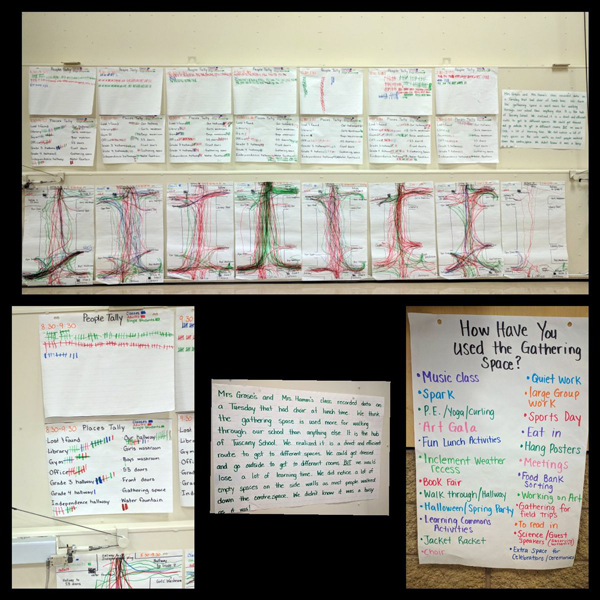May. 17, 2018

ConocoPhillips is sponsoring unique learning opportunities for students in eight CBE schools. The ConocoPhillips Innovation Incubator is an opportunity for educators to use design thinking to create a learning experience for students that revolves around solving problems found within the community.
Students at Tuscany School are working on a project that considers how they use common indoor spaces at their school and in the community. They are looking at all aspects of this project with a focus on Science, Technology, Engineering, Arts and Math (STEAM). Students are also learning about culture, community and the natural environment that surrounds their school and how all of these affect the final design of community spaces.
Students began by spending time in their school’s gathering space to examine and understand the different ways it is used to support learning and their school community.
A Grade 2 class learned how to use technology to capture data by creating a time-lapse video showing how the space is used. Another group of students documented the traffic flow in the gathering space each hour during the school day. The students concluded that the gathering space is used mostly to walk through the school.
Mathematics was incorporated into this project by a Grade 4 class that used traffic flow analysis to calculate the number of student and adults using the gathering space throughout the day. They then represent the data on a line chart.
The Grade 3 students approached the data collection through the lens of a scientist, by linking to their hearing and sound science studies. They made anecdotal notes of the sounds they heard and used a decibel reader on an iPad. The students found that the space is a quiet place for the most part, but can be noisy.
Students will be taking the keen observational skills they’ve developed during the work at their own school out into the community. During an upcoming field trip students will visit the East Village, City Hall, Theatre Junction and the Education Centre. They will observe and experience how the places they visit are used, and who uses them. Students will use this knowledge to consider and understand the design of the space. Their findings and observations will be used to incorporate culture, community, and the land into their school’s learning spaces.
